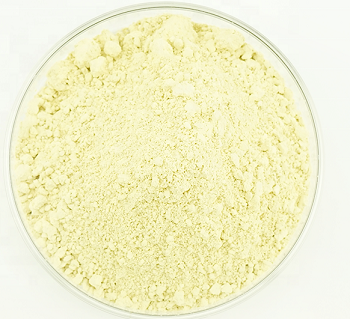|
| | ASTRAGALIN Chemical Properties |
| Melting point | 223-229°C | | Boiling point | 823.2±65.0 °C(Predicted) | | density | 1.79±0.1 g/cm3(Predicted) | | storage temp. | Sealed in dry,Store in freezer, under -20°C | | solubility | DMF: 30 mg/ml; DMSO: 30 mg/ml; DMSO:PBS (pH 7.2) (1:6): 0.14 mg/ml | | form | neat | | pka | 6.20±0.40(Predicted) | | color | Yellow | | InChIKey | JPUKWEQWGBDDQB-QSOFNFLRSA-N | | LogP | 1.950 (est) | | CAS DataBase Reference | 480-10-4(CAS DataBase Reference) |
| Safety Statements | 22 | | WGK Germany | 3 | | RTECS | DJ3080000 | | HS Code | 29389090 |
| | ASTRAGALIN Usage And Synthesis |
| Overview | Astragalin is a chemical compound. It can be isolated from Phytolacca americana (the American pokeweed) or in the methanolic extract of fronds of the fern Phegopteris connectilis.t is also found in wine.
| | source | Astragalin belongs to the class of organic compounds known as flavonoid-3-o-glycosides. These are phenolic compounds containing a flavonoid moiety which is O-glycosidically linked to carbohydrate moiety at the C3-position. Astragalin exists as a solid, slightly soluble (in water), and a very weakly acidic compound (based on its pKa). Within the cell, astragalin is primarily located in the cytoplasm. Astragalin can be converted into astragalin heptaacetate and 2''-acetylastragalin. Outside of the human body, astragalin can be found in a number of food items such as tamarind, american cranberry, chickpea, and bilberry. This makes astragalin a potential biomarker for the consumption of these food products.
| | Chemical Properties | Yellow solid powder
 | | Uses | Astragaline is found in Erica multiflora leaf extract, which is used for mitigating high-?fat and high-?fructose diet (HFFD)?-?induced metabolic syndrome. | | Definition | ChEBI: A kaempferol O-glucoside in which a glucosyl residue is attached at position 3 of kaempferol via a beta-glycosidic linkage. |
| | ASTRAGALIN Preparation Products And Raw materials |
|